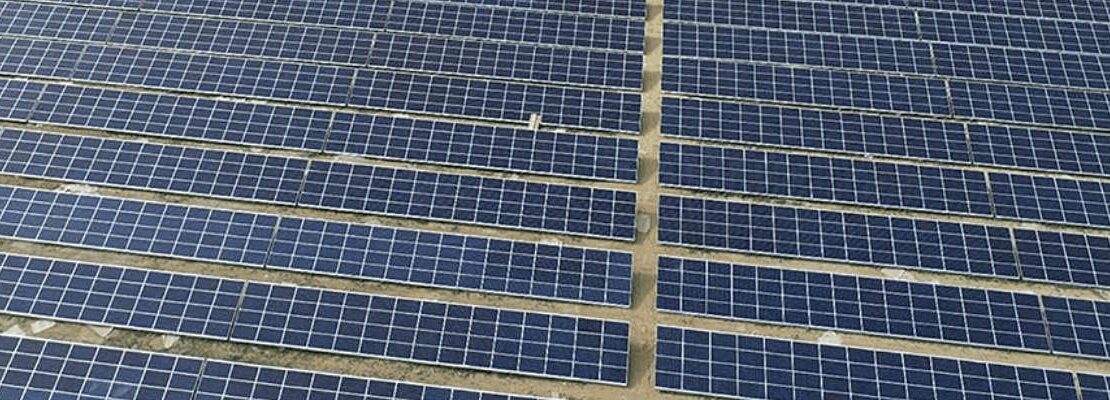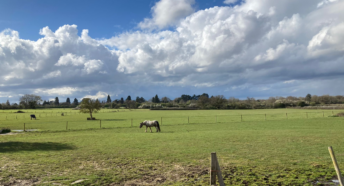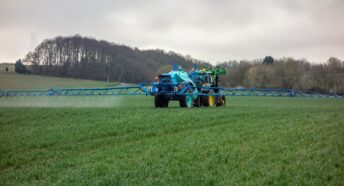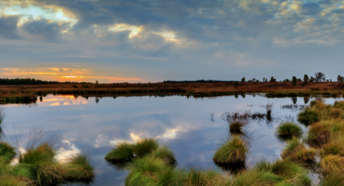Put solar panels on rooftops, not farmland, says CPRE Surrey
Local countryside campaigners are urging Guildford councillors to reject plans for a ‘solar farm’ on farmland in the Green Belt land owned by the University of Surrey.
The Surrey branch of the Campaign to Protect Rural England (CPRE) supports renewable energy but believes that solar panels should go on rooftops not on open countryside.
Arguments have been raging for two years over proposals to construct a ‘solar farm’ on the northern slopes of the Hog’s Back. The site is on the edge of the Surrey Hills National Landscape as well as being within the Green Belt, and campaigners say that the harm it will do to the local countryside far outweighs any benefit in terms of renewable energy.
A revised application (Planning Application No. 24/P/00441) is being submitted to Guildford Borough Council by Scottish and Southern Electricity (SSE) after the previous proposal was withdrawn last year. CPRE believes it is a mistake to allow any sort of development on the University-owned farmland and is calling on Guildford Council to say no to the latest scheme.
There were 64 objections to the original application but the Council has advised that as this is a new application these earlier objections are not being carried forward. CPRE is therefore appealing for local people to register their objections to the new application before the 3rd May deadline.
CPRE Surrey Chairman John Goodridge says: “We are in favour of renewable energy but the Hog’s Back site is totally unsuitable. It is not only Green Belt but it is close to the Surrey Hills National Landscape and is a candidate area for inclusion within an expanded National Landscape.
“There is, in CPRE’s view, no justification to construct so-called solar farms in our local countryside when there is ample space for the installation of solar panels on rooftops. Not only the University itself but any large building is ideal for a solar energy scheme, including council facilities, schools, libraries, multi-storey car parks, and office blocks. Also, surface car parks could be used by placing roof structures with solar panels over them.
“Putting photovoltaic panels on large areas of roof space is the obvious answer to the need for more renewable energy. Indeed, research by CPRE has shown that we can meet most of the UK’s solar energy targets through rooftop installations, without the need for ‘solar farms’ on the Green Belt or open countryside.”
CPRE Surrey is objecting to the SEE/University of Surrey application on the following grounds:
· The solar farm includes a ‘services road’ that traverses the setting to the existing National Landscape. The two southernmost parcels of land are also in the setting of the National Landscape and one is highly visible from the Hog’s Back ridge. The southernmost parcel is an Area of Great Landscape Value.
· The largest parcel of land earmarked for the solar farm is on grade 2-listed farmland which is considered one of the best.
· Two of the three fields earmarked for solar panels are highly visible from existing National Landscape, as is the proposed access road.
· The access road splits to deliver three roads all utilising the public bridleway 447 on which you have the right to use on foot, on horseback or on a bicycle (cyclists should give way to walkers and riders) but not by vehicle. It also utilises the route joined by and linking public footpaths 479 and 480. This is clearly potentially dangerous.
· The whole of the proposed solar farm is within the Green belt. The Green Belt boundary on this side of Guildford has already been moved in two successive Local Plans, resulting in the loss of around 140 hectares of productive farmland. One of the features of the green belt is supposed to be its permanence. Also, the University has publicly stated that its strategy is to develop all its landholdings on the Hog’s Back, and there is a risk that, once the solar farm is built, the land will become classified as “brownfield” and more at risk of housing development in the future.
· The land earmarked for the proposed solar farm is nestled between three belts of ancient woodland. It supports five bird species that appear on the IUCN Red List of Threatened Species (skylark, yellowhammer, linnet, mistle thrush, and song thrush).
· The landowner, the University, has more than 20 hectares of surface-level car parking across its estate, and many of these are large-scale car parks. It also has more than 30 buildings in the Research Park, and more than 100 buildings on its campus. In line with the Council’s “brownfield first” policy, all opportunities to site solar panels above this infrastructure should be taken before high-grade farmland is taken out of production and high-value landscape is harmed.
· The proposal includes over five miles of cable and each metre losses some of the power generated. The cable route goes directly over a large active badger sett.
· The scheme will set a dangerous precedent for similar installations elsewhere in the Borough and throughout Surrey.
Objections to the application should be registered before Friday 3rd May, and can be made online through the Guildford Council planning portal at Comment on a planning application – Guildford Borough Council quoting ‘24/P/00441’.
-ENDS








